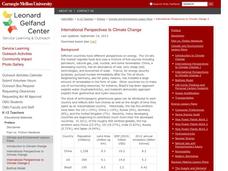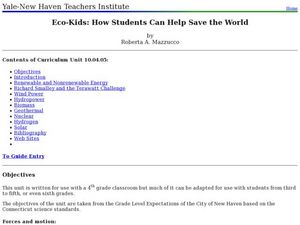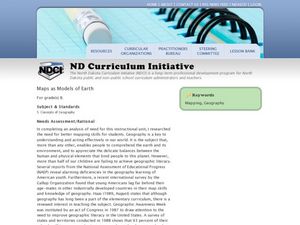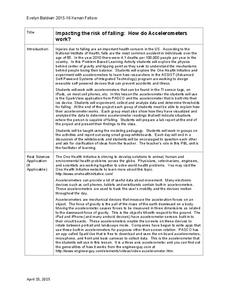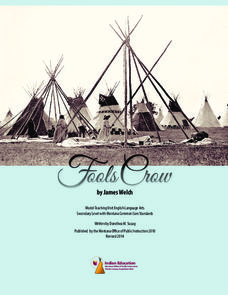Population Connection
Where Do We Grow from Here?
Did you know that the population is expected to grow to 11 billion by 2100? The resource serves final installment in a six-part series on the global population and its effects. Scholars interpret data from the United Nations about the...
Carnegie Mellon University
International Perspectives to Climate Change 2
A couple PowerPoint presentations are used to stimulate discussion about the perspectives of different countries on the issue of energy consumption. Afterward, they play a game in which each team is assigned a country, considers its...
Curated OER
Kites: Patang - The Indian Fighter Kite
Young scholars investigate the history of fighter kites and build their own. In this aeronautics lesson plan, students discover how other countries utilize fighter kites and where they originated. Young scholars create their...
Discovery Education
Sonar & Echolocation
A well-designed, comprehensive, and attractive slide show supports direct instruction on how sonar and echolocation work. Contained within the slides are links to interactive websites and instructions for using apps on a mobile device to...
Purdue University
What a Waste of Food!
Follow the life of an apple from harvest to the consumer. A three-part lesson describes the different steps to get an apple from the farmer to your kitchen and the approximate waste that happens at each step. They discuss the process and...
Curated OER
Eco-Kids: How Students Can Help Save the World
Fourth graders identify the different types of renewable and nonrenewable energy sources. In this ecology lesson plan, 4th graders create models of wind mills and hydropower. They discuss the pros and cons of using alternative forms of...
Curated OER
The Global Precipitation Measurement Mission (GPM) Lesson
Introduce your class to one of the ways that technology is benefiting humanity. The Global Precipitation Measurement Mission involves the data collected by nine satellites from different countries with a united focus on studying world...
Curated OER
Maps as Models of Earth
Eighth graders use different types of maps to find locations and surface features. In this map-reading lesson plan students use a compass to find direction.
Kenan Fellows
Impacting the Risk of Falling: How Do Accelerometers Work?
Young engineers consider how to apply accelerometers and sensors to help prevent falls in elderly people. They consider forces of motion and gravity as part of the engineering design process.
Curated OER
James Welch's Fools Crow
Learners explore the history of Montana's Native Americans by reading James Welch's Fools Crow. Set shortly after the Civil War, the novel focuses on a young Blackfoot Indian and his tribe. Over the course of several weeks, class members...
Curated OER
The Fact of Global Warming
Students investigate the harmful impact of global warming by reading news articles. In this environmental care lesson, students analyze an article about the Kyoto Protocol and its goal of saving our environment. Students...
Curated OER
Winds of Destruction
Fourth graders discuss the problems that have arisen from the lastest string of hurricanes and tsuanamis. They watch a video about severe weather. After the film, 4th graders write four facts they found out about severe weather. ...
Curated OER
Fun with Phylogenetic Trees
Tenth graders differentiate angiosperms and gymnosperms. In this biology lesson, 10th graders construct a musical phylogenetic tree from information they gathered on resource websites. They present their project in class.

